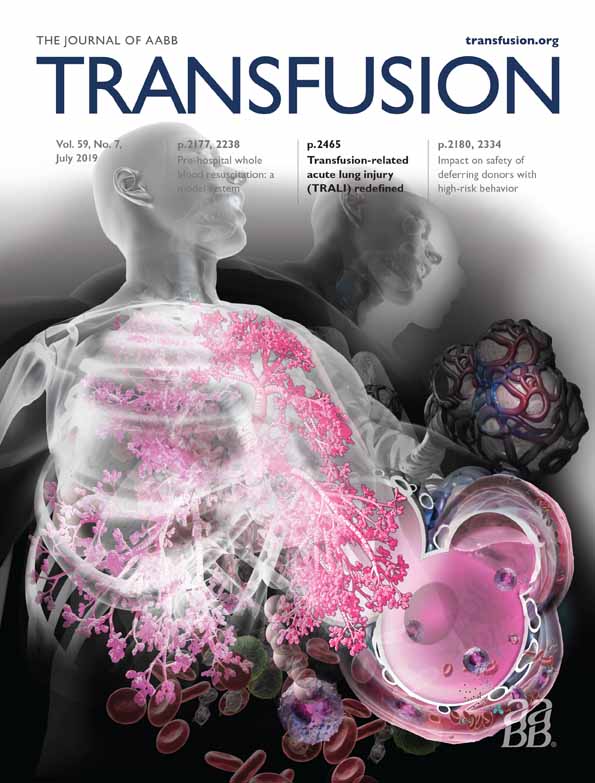The association of inpatient blood utilization and diagnosis-related group weight: implications for risk-adjusted benchmarking
Abstract
BACKGROUND
Risk-adjusted benchmarking could be useful to compare blood utilization between hospitals or individual groups, such as physicians, while accounting for differences in patient complexity. The aim of this study was to analyze the association of red blood cell (RBC) use and diagnosis-related group (DRG) weights across all inpatient hospital stays to determine the suitability of using DRGs for between-hospital risk-adjusted benchmarking. Specific hierarchical organizational units (surgical vs. nonsurgical patients, departments, and physicians) were also evaluated.
STUDY DESIGN AND METHODS
We studied blood use among all adult inpatients, and within organizational units, over 4 years (May 2014 to March 2018) at an academic center. Number of RBCs transfused, all patient refined (APR)-DRGs, and other variables were captured over entire hospital stays. We used multilevel generalized linear modeling (zero-inflated negative binomial) to study the relationship between RBC utilization and APR-DRG.
RESULTS
A total of 97,955 hospital stays were evaluated and the median APR-DRG weight was 1.2. The association of RBCs transfused and APR-DRG weight was statistically significant at all hierarchical levels (incidence rate ratio = 1.22; p < 0.001). The impact of APR-DRG on blood use, measured by the incidence rate ratio, demonstrated an association at the all-patient and surgical levels, at several department and physician levels, but not at the medical patient level. The relationship between RBCs transfused and APR-DRG varied across organizational units.
CONCLUSION
Number of RBCs transfused was associated with APR-DRG weight at multiple hierarchical levels and could be used for risk-adjusted benchmarking in those contexts. The relationship between RBC use and APR-DRG varied across organizational units.
CONFLICT OF INTEREST
The authors have disclosed no conflicts of interest.




